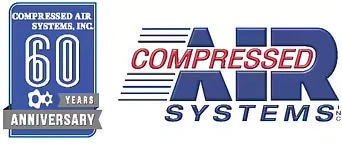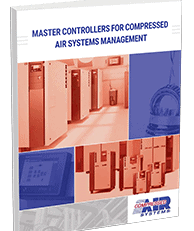RECIPROCATING PUMP PRODUCT PAGE
A pump is a mechanical device that lifts, compresses, or transfers fluids by pressure or suction. Reciprocating pumps, in particular, convert the fluid’s mechanical energy into hydraulic energy. As a type of positive displacement pump, reciprocating pumps use a pumping element to transfer fluid from one place to another. Learn more about reciprocating pumps, including the related products we offer at Compressed Air Systems.
What Is a Reciprocating Pump?
A reciprocating pump can use one or more pumping elements—like a diaphragm, plunger, or piston—that reciprocate in the pumping cylinder to produce the pumping action.
Design
Reciprocating pumps use a plunger or piston to transfer fluid from one point to another. The type of pump determines whether one or more pumping elements are necessary.
Function
Plunger and piston pumps use expanding and contracting cavities to move fluids. These cavities contract and expand in up-and-down or back-and-forth motion.
When connected to a power source, the crank rotates and displaces the connecting rod. The piston attached to the connecting rod moves in a linear direction. The crank moves outwards, and the piston creates a vacuum in the cylinder. The vacuum opens the suction valve, and the suction pipe sucks fluid from the source. The pressure opens the delivery valve, forcing the liquid to be discharged through the delivery pipe.
Applications
Since they discharge exact fluid quantities, reciprocating pumps are often used in operations where delivery pressure is significant. With 90% mechanical efficiency, reciprocating pumps are more efficient than other types of pumps. Common applications include:
- Firefighting systems
- Vehicle cleaning
- Pneumatic pressure applications
- Vessels, tanks, tubes, and heat exchangers
- Wet sandblasting
- Wastewater treatment systems
- High-pressure pumps for reverse osmosis
- Boiler feeding
- Oil drilling, injection, disposal, and production
How Do Reciprocating Pumps Work?
To understand how reciprocating pumps work, it’s important to learn the role of each component of the pump.
- Piston: The piston is a lubricated shaft that slides back and forth inside the cylinder, pushing and pulling the fluid. This action produces a vacuum and high pressure at the outlet.
- Crank: A crank is a solid circular disk connected to a power source like an engine or motor. The crank transfers the power source’s rotary motion to the piston, which moves in a reciprocating motion via a connecting rod.
- Suction pipe: The suction pipe sucks the liquid from the source and pushes it into the cylinder of the reciprocating pump through a suction valve.
- Suction valve: This valve ensures that fluid flow in the suction pipe is unidirectional. It only opens during fluid suction and closes when there’s liquid discharge to the outside.
- Delivery pipe: The delivery pipe connects the pump cylinder to the outlet source. It moves the liquid from the cylinder to its next location.
- Delivery valve: Like the suction valve, the delivery valve prevents the backflow of fluid in the delivery pipe.
Reciprocating Pumps from Compressed Air Systems
If you are in the market for reciprocating pumps, you need to consider the fluid media, pump design, speed of rotation, and other factors. Most importantly, the pump should come from a reputable vendor.
Compressed Air Systems carries a wide selection of high-quality reciprocating pumps, allowing you to choose one that fits your specific needs. Our compressor pump collection is from industry leading manufacturer Powerex and features lower operating temperatures and continuous lubrication. These benefits lead to increased ring life and lower maintenance costs.
For specific information about our compressed air pumps and reciprocating pumps, view our reciprocating pump product catalog.














